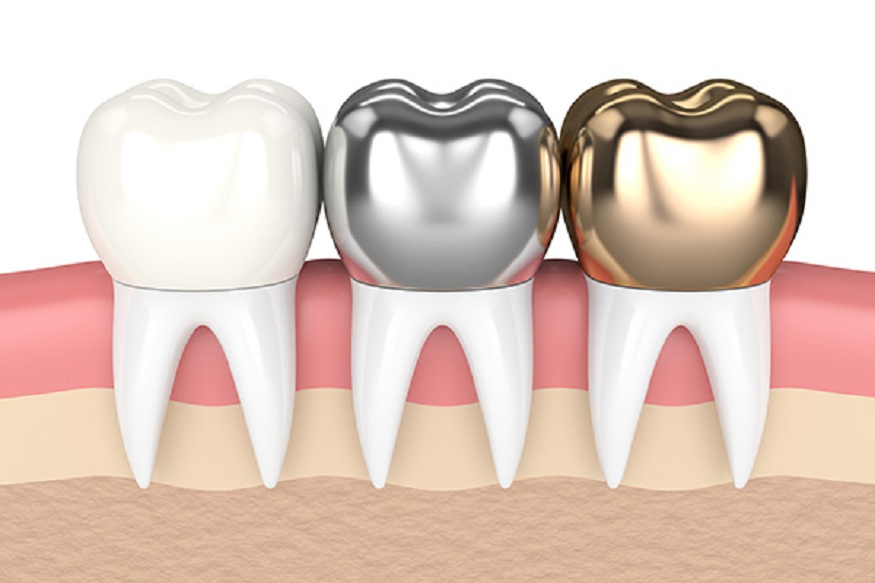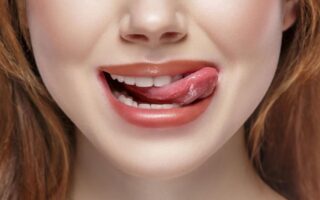Overview of Dental Crowns
In restorative dentistry, dental crowns have become vital for maintaining compromised teeth’ functionality and aesthetics. A dental crown, often likened to a cap, is meticulously designed to encase a tooth, providing reinforcement and protection. This comprehensive coverage is particularly significant for back teeth, or molars, which endure significant stress during activities such as chewing and grinding. By securing the structural integrity of a weakened tooth, a crown helps to stave off the progression of decay or damage, thereby minimizing the need for more extensive dental interventions. The decision to opt for dental crowns for back teeth is often guided by a confluence of factors, including the degree of tooth decay, aesthetic considerations, and personal preferences. These crowns restore the original shape and size of the tooth and enhance its overall strength, making them a preferred solution for those seeking to bolster the longevity of their dental health.
Benefits of Dental Crowns for Back Teeth
The decision to crown a tooth stems from multiple benefits, each contributing to improved oral health and patient satisfaction. As molars play a vital role in the digestive process by breaking down food, any impediment to their efficiency can lead to broader health issues. Crowning these teeth ensures that they retain their functionality, facilitating effective digestion and nutrient absorption. Furthermore, dental crowns are a preventive measure against further tooth decay and damage. By covering the entire tooth surface, crowns provide a formidable barrier against bacteria and plaque that can lead to cavities and periodontal disease. This preventative aspect is crucial, especially in individuals with a history of dental issues, as it reduces the likelihood of future complications that necessitate more intrusive procedures such as root canals or extractions.
Additionally, the placement of crowns can correct issues related to malocclusion or misaligned bites, which can cause pain and discomfort when left unaddressed. By restoring the tooth’s proper alignment, crowns alleviate these symptoms and contribute to a more harmonious oral structure. The result is not merely aesthetic but functional, as a well-aligned bite ensures even distribution of chewing forces, mitigating the risk of wear and damage to multiple teeth. Finally, from an aesthetic perspective, crowns made from high-grade materials such as porcelain or ceramic can mimic the translucency and hue of natural teeth, resolving concerns regarding discolored or misshapen teeth. This enhancement boosts self-esteem and confidence, particularly when social interactions demand a healthy and attractive smile.
Types of Dental Crowns: What’s Best for You?
The selection of the appropriate dental crown material is an essential part of dental care that must be tailored to meet individual needs and circumstances. The myriad options available possess unique attributes, and understanding their differences is paramount in making an informed decision.
Ceramic Crowns
Ceramic crowns are heralded for their aesthetic appeal, rendering them ideal for front teeth restoration where visual continuity is paramount. These crowns are constructed from advanced materials such as lithium disilicate or zirconia, offering exceptional durability without compromising appearance. Technological advancements have enabled ceramic crowns to perform on par with metal-based alternatives, providing a favorable balance of strength and aesthetics. However, due consideration must be given to their susceptibility to cracking under excessive pressure, which makes them less suitable for heavily loaded back teeth.
Metal Crowns
For patients prioritizing functionality over form, metal crowns present a compelling option. These crowns are forged from noble metals such as gold or base-metal alloys like nickel or chromium, conferring unmatched strength and longevity. Their ability to withstand significant masticatory forces makes them particularly suited for molars. Unlike other materials, metal crowns require minimal tooth structure reduction, maintaining as much natural tooth as possible. Although the metallic sheen may be a drawback for some, its unmatched durability is an undeniable advantage for teeth at the back of the mouth.
Porcelain-Fused-to-Metal Crowns
Porcelain-fused-to-metal (PFM) crowns amalgamate the advantages of both realms, providing the resilience of metal and the visual charm of porcelain. The metal framework provides structural integrity, while the porcelain overlay mimics the natural tooth’sappearance. These crowns are celebrated for their versatility but may reveal the underlying metal over time as gums recede, a cosmetic consideration for long-term wearers. Nevertheless, they remain a robust choice for teeth requiring strength and a natural appearance.
The Procedure: What to Expect
Embarking on the journey towards acquiring a dental crown necessitates a multi-phased approach tailored to secure optimal outcomes. A comprehensive understanding of the steps involved alleviates anxiety and prepares patients for crowns’ enhanced functionality and aesthetics. During the initial consultation, a detailed examination is conducted, utilizing digital imaging or X-rays to assess the tooth’s condition. This assessment determines whether deficiencies such as decay or damage necessitate intervention. At this juncture, a collaborative discussion between dentist and patient occurs, illuminating the variety of materials available and aligning expectations regarding outcomes and expenses. The preparatory phase commences with tooth reshaping, an essential step that creates sufficient space for the upcoming crown. This involves carefully removing the outer tooth layer using precision instruments. In instances where the tooth is severely compromised, reconstructive filling material may be employed to strengthen its structure.
Following tooth preparation, meticulous impressions of the tooth and adjacent teeth are taken using a malleable material or digital scanners. These impressions constitute the blueprint for the customized crown, ensuring alignment with the patient’s bite and maximizing comfort. As the permanent crown is fabricated during the interim period, a temporary crown made from acrylic resin is placed. This safeguard protects the tooth from sensitivity or further damage while preserving aesthetics. The completion phase involves removing the temporary crown following a thorough cleaning of the tooth surface. The permanent crown is then fitted, adjustments are made for a seamless bite, and it is affixed using dental cement that hardens rapidly. A follow-up meeting is usually arranged to observe the crown’s integration and resolve any issues.
How to Care for Your Dental Crowns
While dental crowns are designed to provide enduring protection to damaged teeth, diligent maintenance routines greatly influence their longevity. Embracing systemic care practices extends the crown’s life and ensures continued oral health. Consistent oral hygiene practices are imperative. These include brushing with fluoride toothpaste twice daily to eliminate plaque and food particles. Selecting a toothbrush with soft bristles for those with crowns prevents inadvertent damage to the crown material. Flossing constitutes a critical component of crown care. Utilizing flossing techniques adapted for crowns, such as super floss, ensures that the gumline and interdental spaces are free from bacteria-laden debris. Special attention is paid to the crown margins to avert decay or gum disease.
Patients are encouraged to make conscious eating decisions that safeguard their crowns. Hard and sticky foods such as hard candies, nuts, and caramel should be avoided, as they can fracture the crown or dislodge it from its position. Regular dental check-ups emerge as a cornerstone of crown maintenance. Dental professionals can examine the crown’s structural integrity, address any alignment issues, and perform professional cleanings that bolster oral hygiene efforts at home.
Common Concerns and FAQs
As with any dental procedure, the decision to receive a dental crown invites pertinent questions and concerns that vary from one individual to another. Addressing these inquiries facilitates informed decision-making, reduces anxiety, and enhances patient experience. One prevalent concern is the potential for tooth sensitivity following crown placement. While sensitivity to temperature variations is typical, particularly in the days following placement, it generally wanes as the tooth acclimates to the new crown. Should sensitivity persist, consulting your dentist can provide reassurance and potential solutions.
Another area of inquiry centers around crown maintenance and how their lifespan aligns with general dental care practices. Patients often wonder whether crowns require special care beyond regular oral hygiene routines. While crowns demand some specific considerations, like avoiding overly burdensome foods, their care largely parallels standard dental hygiene practices. Patients may also express apprehension regarding the longevity of crowns and factors that influence their durability. Regular dental evaluations can identify any issues early, allowing for timely intervention and prolonging the crown’s life. For those contemplating the aesthetic impact of different crown types, guidance from resources offers independent insights into material choices, enabling patients to choose options most aligned with their goals and preferences.
Conclusion: Making the Right Choice
Dental crowns present a multifaceted solution that addresses a spectrum of functional and aesthetic dental concerns, rendering them a cornerstone of restorative dentistry. The decision-making process regarding crown placement necessitates carefully evaluating the patient’s unique dental needs, material preferences, and overall treatment objectives. Engaging in an open dialogue with a dental professional facilitates understanding the available options and their corresponding advantages and limitations, ensuring that the chosen solution aligns with the patient’s health and aesthetic aspirations.
Advances in dental materials and techniques continually enhance the viability and effectiveness of dental crowns, offering individuals the opportunity to reclaim their smile’s vitality and function. Proper care and vigilance can significantly extend the lifespan of crowns, underscoring the importance of consistent oral hygiene practices and regular dental evaluations. Ultimately, by investing time in understanding their options and maintaining diligent care routines, patients can enjoy the myriad benefits of dental crowns, confidently engaging with the world with a restored and radiant smile.




